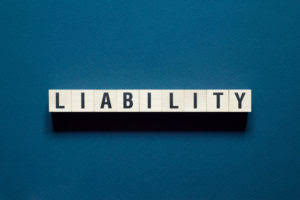
The decision to retain earnings or to distribute them among shareholders is usually left to the company management. However, it can be challenged by the shareholders through a majority vote, as they are the actual owners of the company. The Retained Earnings account is credited to reflect the addition of the net income for the year. Chartered accountant Michael Brown is the founder and CEO of Double Entry Bookkeeping. He has worked as an accountant and consultant for more than 25 years and has built financial models for all types of industries.
What is a statement of retained earnings?
The retained earnings portion of stockholders’ equity typically results from accumulated earnings, reduced by net losses and dividends. Like paid-in capital, retained earnings is a source of assets received by retained earnings credit balance a corporation. Paid-in capital is the actual investment by the stockholders; retained earnings is the investment by the stockholders through earnings not yet withdrawn. The expense accounts have debit balances so to get rid of their balances we will do the opposite or credit the accounts. Just like in step 1, we will use Income Summary as the offset account but this time we will debit income summary.
Q: Is Retained Earnings a debit or credit?
- Retained earnings represents the accumulated net income of a company that has not been distributed to shareholders as dividends.
- The cost of the asset is then spread over the useful lifespan of the assets and accounted for as depreciation.
- Calculating ending retained earnings involves adding the net income (or subtracting the net loss) for the period to the beginning retained earnings and then subtracting any dividends paid.
- The decision to retain earnings or to distribute them among shareholders is usually left to the company management.
The main change from an adjusted trial balance is revenues, expenses, and dividends are all zero and their balances have been rolled into retained earnings. The main difference between retained earnings and profits is that retained earnings subtract dividend payments from a company’s profit, whereas profits do not. Where profits may indicate that a company has a positive net income, retained earnings may show that a company has a net loss, depending on the amount of dividends it paid out to shareholders. So, the amount of income summary in the journal entry above is the net income or the net loss of the company for the period. Hence, the retained earnings account will increase (credit) or decrease (debit) by the amount of net income or net loss after the journal entry. Likewise, the net income will increase the retained earnings while the net loss will decrease the retained earnings as the result of the journal entry.

What is the Normal Balance of Retained Earnings?
In this case, this debit balance of retained earnings will be presented as a negative in the balance sheet. Prior period adjustment is made when there is an error in prior period financial statements or the company changes the accounting standard or policy that requires the retrospective adjustment. The balance in dividends, revenues and expenses would all be zero leaving only the permanent accounts for a post closing trial balance. The trial balance shows the ending balances of all asset, liability and equity accounts remaining.
What’s the point of carrying forward positive results?
However, in the case of negative retained earnings, the balance in the retained earnings account will be a debit. Negative retained earnings are also referred to as an Accumulated Deficit, which is usally reported as a separate line item on the company’s balance sheet. Retained earnings are a crucial aspect of a corporation’s financial health. They are the sum of all profits retained by the company, rther than distributed as dividends to shareholders.
We cover key topics such as the definition of retained earnings, how they appear on a balance sheet, their impact on a company’s financial statements, and how they are calculated and managed. From our discussion, we have seen that retained earnings are usually a credit and not a debit. Retained earnings are the company’s net income that it keeps for future business operations instead of paying out as dividends to its shareholders. The higher a company’s retained earnings, the more financially stable it is. This indicates that the company generates adequate revenue that covers its expenses and dividend payments while still having some leftover money to reinvest in the business. Some factors that can affect a company’s retained earnings include depreciation, COGS, dividends, etc.
Retained Earnings: Entries and Statements
A maturing company may not have many options or high-return projects for which to use the surplus cash, and it may prefer handing out dividends. Net income increases the balance in the Retained Earnings account, so we would credit the Retained Earnings account by $20,000. To simplify your retained earnings calculation, opt for user-friendly accounting software with comprehensive reporting capabilities. There are plenty of options out there, including QuickBooks, Xero, and FreshBooks.

Retained earnings can be used to purchase assets or invest in the future, but companies must be careful not to use too much of their retained earnings. Retained earnings represent the cumulative profits the company has kept after distributing dividends to shareholders. Retained earnings is an equity account, a component of stockholders’ equity, https://www.bookstime.com/ presented on a company’s balance sheet.
- Therefore, a company with a large retained earnings balance may be well-positioned to purchase new assets in the future or offer increased dividend payments to its shareholders.
- Management and shareholders may want the company to retain earnings for several different reasons.
- The expense accounts have debit balances so to get rid of their balances we will do the opposite or credit the accounts.
- Also, mistakes corrected in the same year they occur are not prior period adjustments.
- The company can make the retained earnings journal entry when it has the net income by debiting the income summary account and crediting the retained earnings account.
Normal Balance Examples

Those account balances are then transferred to the Retained Earnings account. When the year’s revenues and gains exceed the expenses and losses, the corporation will have a positive net income which causes the balance in the Retained Earnings account to increase. A balance sheet with retained earnings shows the financial position of a company at a specific point in time. Retained earnings are listed under shareholders’ equity, reflecting the company’s accumulated profits. This section of the balance online bookkeeping sheet is critical for understanding the financial stability and growth potential of the business. The amount a company gets for the stocks sold at par value is the share capital while any additional amount realized is the paid-in capital.